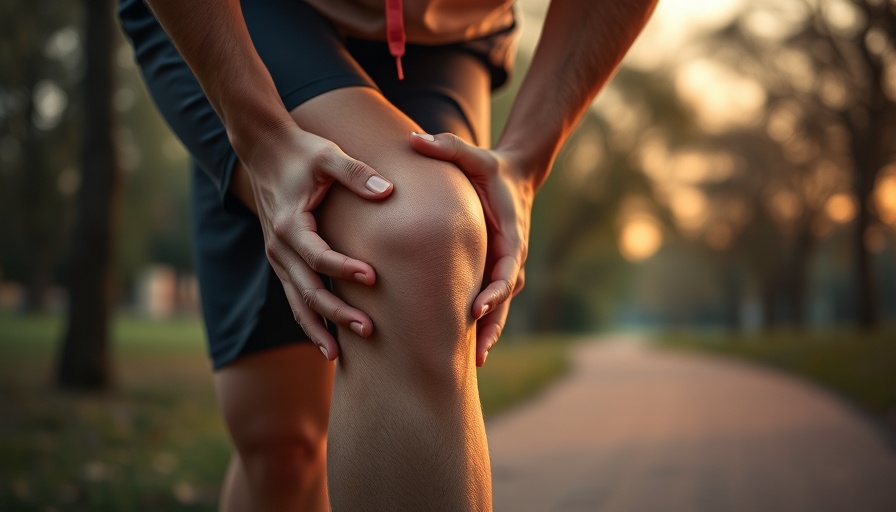
Discovering IT Band Syndrome: What You Need to Know
As fitness enthusiasts, we often push our bodies to the limit, from running grueling marathons to tackling steep hiking trails. However, one common yet often overlooked ailment can sideline our adventures: Iliotibial Band Syndrome (ITBS). This condition manifests as friction between the iliotibial band and the outer thigh and knee, causing pain that can severely hinder mobility.
The iliotibial band itself is a thick band of connective tissue that stabilizes our knees and hips. When it becomes tight or inflamed due to overuse or improper mechanics, the result is discomfort that can vary from mild annoyance to sharp pain. For those engaged in regular physical activity, especially runners and cyclists, understanding this injury is critical.
Understanding Symptoms and Diagnosis
Common Symptoms: Individuals suffering from ITBS typically experience pain on the outside of the knee, with some reporting a burning sensation or swelling. Other signs might include tenderness around the knee and a clicking sensation during movement. Recognizing these symptoms early is vital for effective treatment, as they often start with subtle hints of discomfort before escalating.
Diagnosing ITBS usually involves a physical examination and, sometimes, imaging tests such as MRIs or ultrasounds to confirm the condition and rule out other issues. This proper identification not only helps in recovery but also in tailoring a rehabilitation plan.
Effective Treatment Strategies to Alleviate Pain
While rest and icing are the initial recommendations for ITBS, the journey to recovery often mandates a more comprehensive approach. Physical therapy plays a vital role in this process, focusing on strengthening weak muscles, particularly the hip abductors, and improving overall biomechanics. A targeted exercise regimen can dramatically enhance recovery, incorporating specific stretches and strengthening exercises aimed at realigning the body and alleviating tension.
Holistic Approaches to Recovery: Beyond physical therapy, exploring holistic healing techniques can be immensely beneficial. Strategies such as nutritional support, stress relief practices, and adequate recovery time contribute to a more sustainable healing process. These elements together create a balanced approach, addressing both physical and emotional aspects of healing.
Creating Your Personalized Recovery Plan
The uniqueness of each body necessitates a tailored recovery strategy. Start by assessing your activity levels and identifying any repetitive motions or improper techniques that could be contributing to the strain. Take charge of your recovery by implementing a plan that adjusts to your specific needs; this might include modifications to your workout routines and scheduled rest days to allow your body to recover.
Furthermore, engage in self-care practices such as foam rolling or massage therapy to ease tightness in the not only the IT band but also the surrounding muscles. These techniques can enhance blood flow and flexibility, making them essential components of your healing journey.
Real Experiences and Testimonials
Sharing success stories can bolster motivation and inspire those grappling with ITBS. Numerous individuals have successfully navigated their way out of the grip of ITBS to continue their beloved activities. For instance, consider the story of a runner who battled ITBS for months, only to find relief through personalized physical therapy and lifestyle adjustments. Their journey serves as a beacon of hope, demonstrating that with the right strategies, this condition can be overcome.
Moving Forward: Prevention is Key
Prevention is always the best medicine. To reduce the risk of ITBS, incorporate regular stretching and strengthening routines into your daily practices, particularly focusing on the hip and thigh areas. Evaluate your footwear for proper support and adjust your training regimens gradually to avoid overuse injuries.
Education plays a crucial role in this preventive approach. Understanding your body’s limitations and the mechanics involved in activities like running or cycling can empower you to make informed choices that protect your health and performance.
Conclusion: Your Journey to Recovery
As you navigate the challenges of IT Band Syndrome, remember that recovery is a marathon, not a sprint. With commitment to prevention strategies, a robust recovery plan, and the right support system, you can not only conquer IT pain but also return to your active lifestyle stronger than ever.
So, don't wait! If you're experiencing symptoms of ITBS, take action today. Consider consulting a healthcare professional to create your personalized blueprint for recovery and reclaim the joy of movement.
 Add Row
Add Row  Add
Add 




Write A Comment